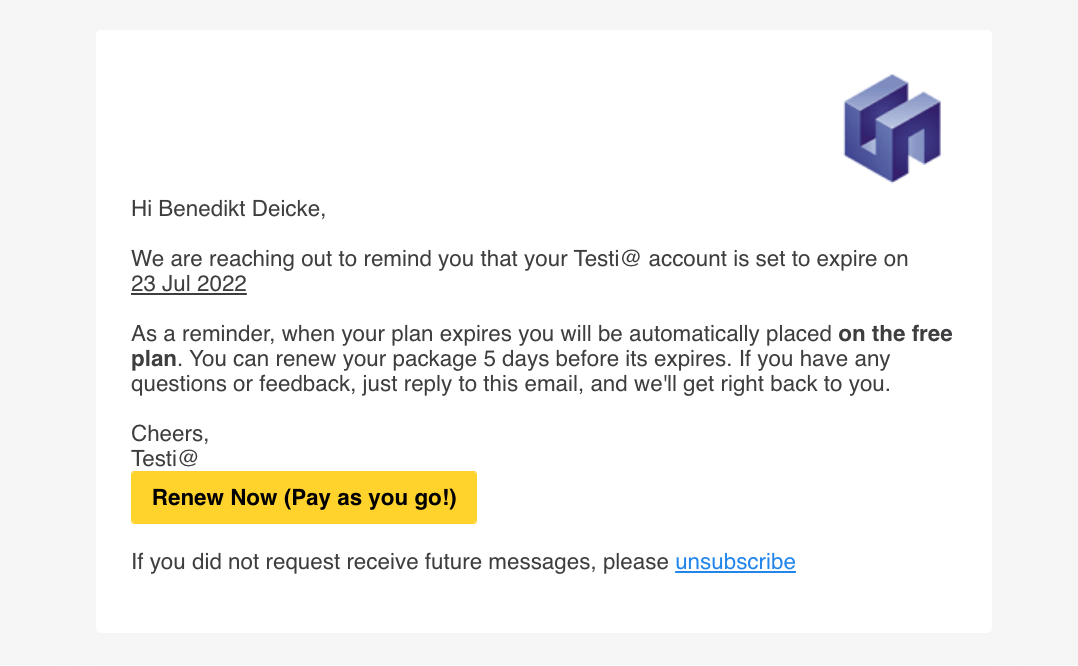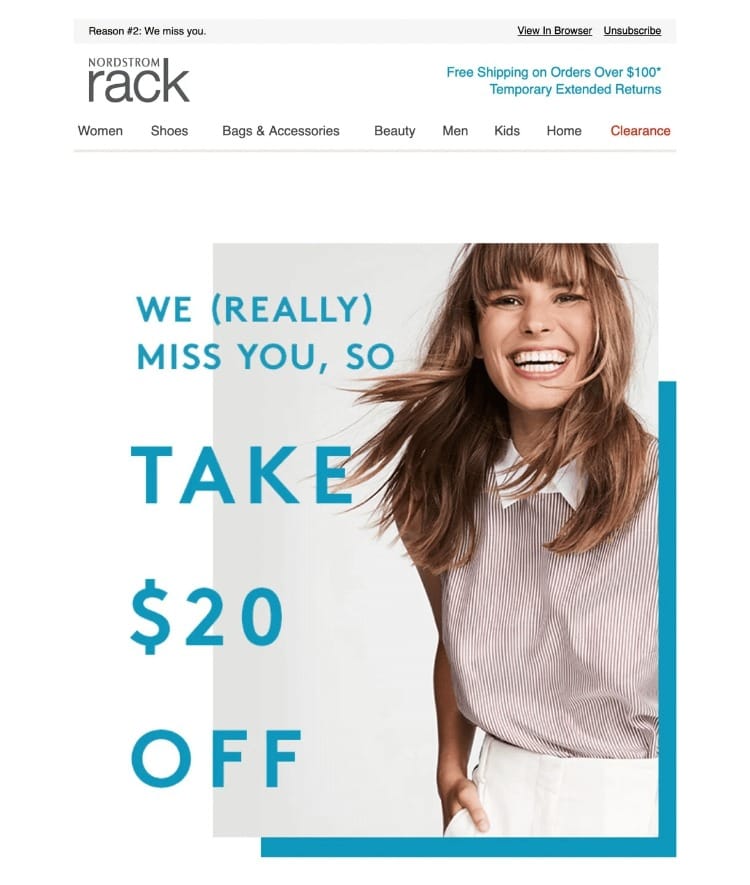Customer engagement is a crucial aspect of any successful marketing strategy. It helps build long-lasting customer relationships and boosts brand loyalty.
But how do you boost customer engagement? One effective way is to do email retargeting. It can be a game-changer for businesses also looking to improve their marketing ROI and increase customer retention rates.
What is email retargeting?
Email retargeting is a marketing strategy that involves sending personalized emails to people who have shown an interest in your product or service. This may include visitors who abandoned their shopping carts, customers who made past purchases, and subscribers who clicked on certain links in your previous emails.
In email retargeting, pixels or browser cookies collect data on a user's behavior and actions, such as website visits, product views, or abandoned carts. You then use this data to create custom email campaigns with relevant content and offers.
Apart from customer engagement, the key benefits of email retargeting include increased brand awareness and visibility, and increased conversions. You can use email retargeting to reach potential customers at various stages of the buyer's journey, nurturing leads and encouraging them to take the desired action.

When should you implement email retargeting strategies?
Businesses can benefit from email retargeting tactics in several situations. Here are some of those instances:
Increased browsing activity
You can use email retargeting tactics when there is a lot of customer activity related to your brand or product on your site. Some examples of this behavior include visiting the brand's website often or spending a long time on specific product pages.
Email retargeting increases the chances of engagement and conversion in this scenario. That’s because your email messaging speaks directly to the individual's preferences and past actions.
Abandoned carts
When customers add products to their shopping cart but don’t push through with the checkout process, it still implies that they are interested in those items.
In such cases, email retargeting can be highly beneficial. You might refocus consumers' attention on the products they left behind and urge them to finish the transaction using discounts or other incentives like free shipping.

For cross-selling and upselling post-purchase
You can tailor your email campaigns to promote related or upgraded offerings to customers who have already purchased your products or services. This can help you maximize customer lifetime value and increase revenue for your business.
For instance, if a customer buys a laptop, you can retarget them with promotional emails recommending laptop accessories such as a mouse, laptop bag, or external hard drive. This allows you to build on the existing relationship and increase additional sales or initiate higher-value purchases.
How to craft effective retargeting email campaigns?
A successful retargeting email campaign requires a well-planned strategy. Let's discuss some essential steps for guaranteed success.
Collect valuable customer information
To ensure successful remarketing emails, you need to gather crucial customer data. Collect information about customers' interests, activities, and preferences to understand their needs. Look at their browsing behavior, purchase history, and cart data as well.
You can leverage website analytics, customer surveys, and tracking pixels to help you collect this data.

Segment your audience
Once you have your data, segment your email list. This is a highly effective strategy that allows you to divide your audience into smaller, more focused groups. With this approach, you can send customized and targeted content to each segment. The result? Increased open rates, click-through rates, and conversion rates.
You can segment your email list based on various criteria. But since we’re talking about email retargeting, popular criteria for segmenting include the audience’s previous purchase behavior and website browsing history.
You can use email newsletter tools to segment your list of email addresses. These tools offer automation features that allow you to set up specific triggers. Once the triggers are set off, targeted emails are sent to the appropriate segments. That should save you time and effort, leading to better results.
Craft compelling email retargeting campaigns
Once you have your email segments, it’s easy to craft effective email retargeting campaigns. After defining your campaign's goals and objectives, produce content that connects with each segment. That might include tailored product suggestions, unique deals, or emails that pique the interest and inform.
But don’t just focus on your email body. Write relevant eye-catching subject lines that create a sense of urgency or curiosity as well. These will prompt recipients to open your emails. You can use a generative AI platform to efficiently create personalized content–both your email body and subject line—at scale.
Ensure your email design is visually appealing and consistent with your brand's identity as well. Check out this eye-catching design by ColourPop Cosmetics. The vibrant colors and graphic details make it truly stunning. Since the email uses one of ColourPop Cosmetics’ primary colors, one look and you know the email is from the brand, too.

Finally, analyze and optimize your campaigns regularly. This will help ensure you consistently deliver relevant and engaging content that keeps your audience coming back for more.
4 Successful retargeting email campaigns ( with examples)
Ready to craft your own retargeting email campaign? Get inspiration from these brands who nailed their own:
Cart abandonment
This approach entails sending focused emails to customers who have added items to their shopping cart but have yet to complete their purchase. Cart abandonment can happen for many reasons. Customers may have price concerns, for instance, or shipping issues.
Therefore, it's crucial to address these concerns in your abandoned cart email to boost your chances of conversions.
Renewal reminder
Renewal reminder emails are an integral part of every SaaS marketing strategy. These email campaigns play a critical role in preventing churn and boosting user retention. After all, they encourage customers to renew their subscriptions before they expire.
When sending a renewal reminder email, include a direct link to renew and offer personalized assistance in case of questions or concerns. Additionally, remind your customers of any changes in information or rules since their last subscription. Highlight any new features or benefits they can expect with the renewal. You can also emphasize what happens if they don’t renew.

With this tactic, you won’t just effectively increase renewal rates. You’ll help maintain a loyal customer base as well.
Replenishment update
Why not notify email subscribers about your newly available items? Since your recipients made a purchase from you before, they’ll likely do it again. With replenishment updates in your email, you can encourage repeat purchases and foster customer loyalty.
As much as possible, offer products that are the same as, related to or similar to the items your subscriber already bought from you. Overall, this email retargeting strategy is particularly advantageous for businesses that offer consumable products or subscription-based services.
Re-engagement email
Re-engagement emails are sent to customers who have been inactive subscribers or have not made a purchase in a while. The emails aim to reignite their interest in you.
To entice inactive customers back to their brand, email marketers give personalized discounts or exclusive offers.
Here's an example of a re-engagement email with a discount.

Nordstrom Rack even offers free shipping on orders over $100. With these types of emails, you can create a sense of urgency and excitement and encourage customers to make a purchase.
Email retargeting is key
Email retargeting is a powerful tactic that can significantly enhance customer engagement. When you tailor your email marketing campaign to consumers who have already shown an interest in your business, you increase your chances of them taking your desired action.
So, leverage your consumers' browsing history and cart data for email retargeting. You can also send subscribers emails for cross-selling and upselling after they made a purchase.
To ensure effective email retargeting campaigns, just follow a strategy. Gather consumer data, and group your target audience into segments. Then create an engaging campaign based on your audience segments.
With this approach, you can easily connect with your customers on a deeper level. You’ll increase customer satisfaction and loyalty, and boost conversions. Best of luck!
Michal Leszczynski is the Head of Content Marketing and Partnerships at GetResponse. With 10+ years of experience, Michal is a seasoned expert in all things online marketing. He’s a prolific writer, skilled webinar host, and engaging public speaker. Outside of business hours, Michal shares his wealth of knowledge as an Email Marketing lecturer at Kozminski University in Warsaw.










